Corona, CA Pollen and Allergy Report for Summer 2023
Pollen Allergy Trends in Corona, CA
When is pollen lowest in Corona, CA?

February
Lowest month total PPM
Avg. PPM
When is pollen highest in Corona, CA?

March
Highest month total PPM
Avg. PPM
How does pollen in Corona, CA compare to California?
Corona has a lower average PPM than the state of California.
Corona yearly avg PPM:
California yearly avg PPM:
How does pollen in Corona, CA compare to the USA?
Corona has a lower average PPM than the USA.
Corona yearly avg PPM:
USA yearly avg PPM:
Is pollen worse this year in Corona, CA?
Spring 2023 was better than spring 2022.
Spring 2023 PPM:
Spring 2022 PPM:
Average PPM in Corona, CA
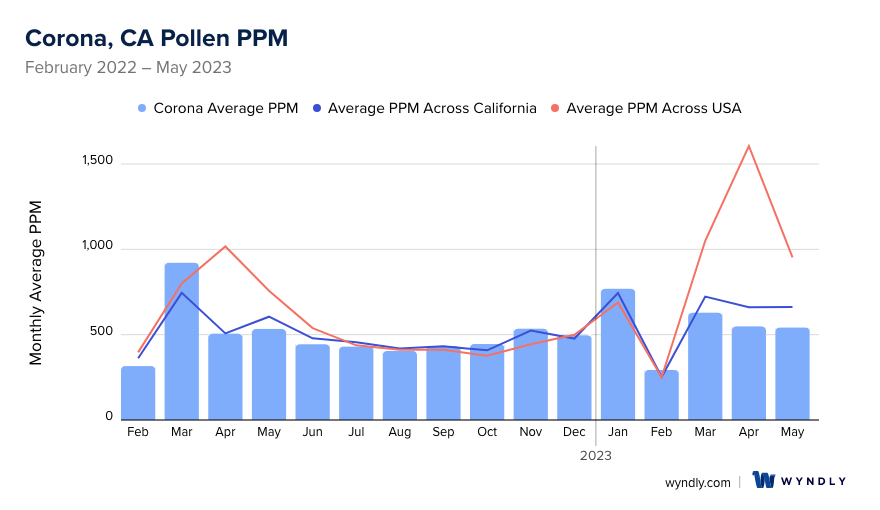
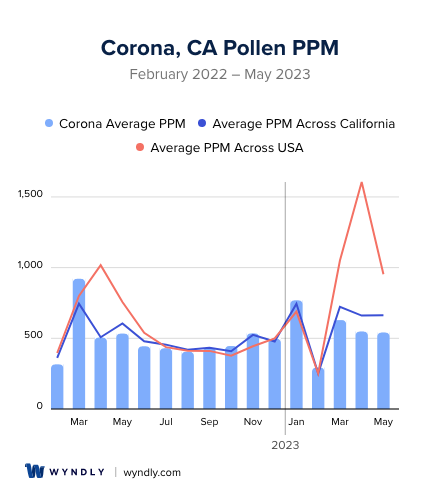
Corona, CA Pollen and Allergy Breakdown by Month
Grass
When is grass pollen highest in Corona, CA?
May has the highest grass pollen in Corona, CA with an average PPM of
When is grass pollen lowest in Corona, CA?
December has the lowest grass pollen in Corona, CA with an average PPM of
Tree
When is tree pollen highest in Corona, CA?
March has the highest tree pollen in Corona, CA with an average PPM of
When is tree pollen lowest in Corona, CA?
August has the lowest tree pollen in Corona, CA with an average PPM of
Weed
When is weed pollen highest in Corona, CA?
November has the highest weed pollen in Corona, CA with an average PPM of
When is weed pollen lowest in Corona, CA?
February has the lowest weed pollen in Corona, CA with an average PPM of
Corona, CA Pollen Monthly Breakdown by Pollen Type
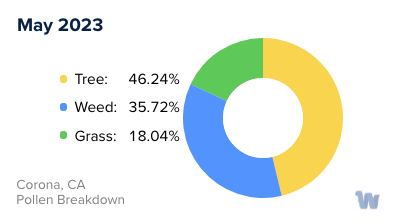
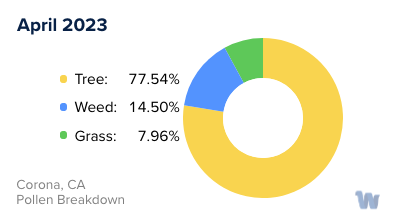
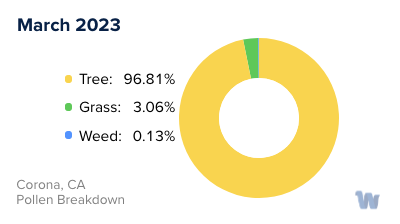
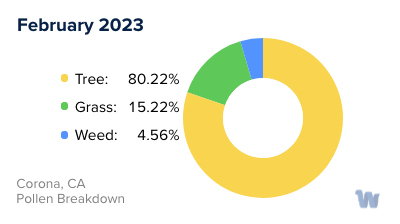
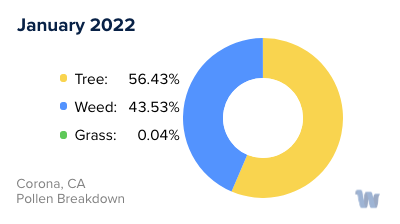
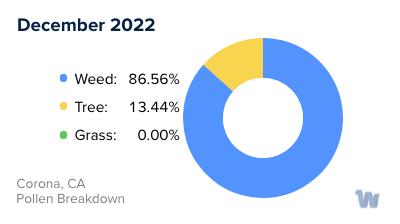
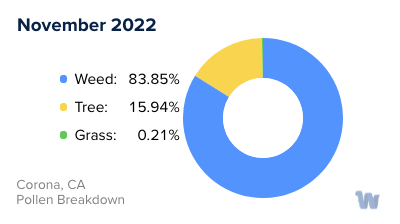
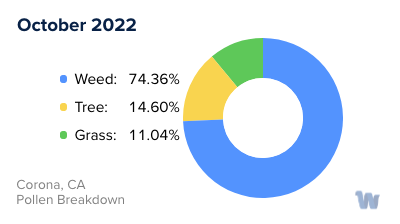
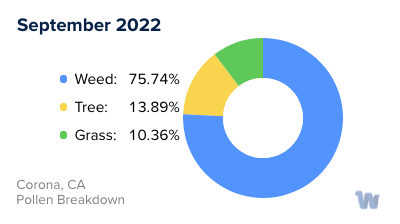
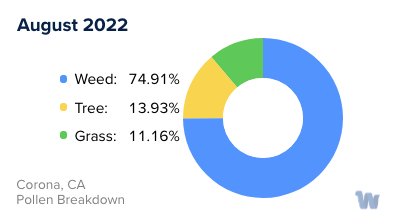
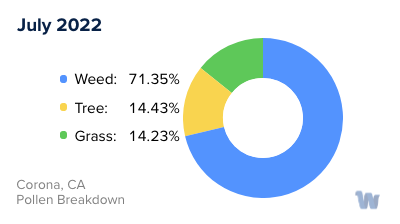
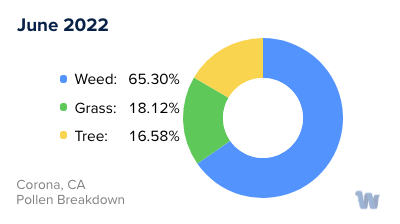
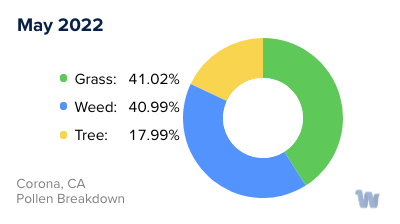
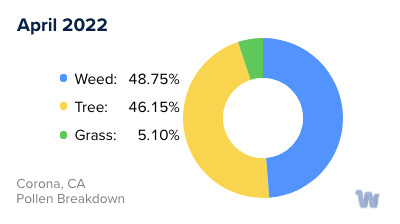
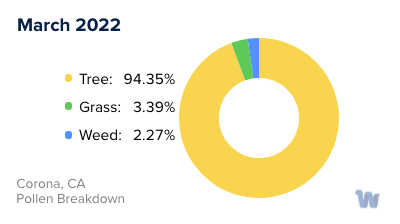
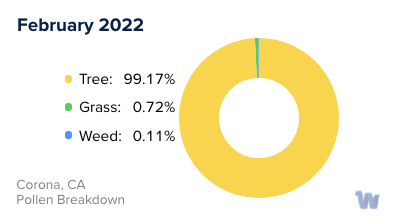
Pollen and Hay Fever in Corona, CA
In Corona, California, people often experience pollen allergies, commonly known as hay fever, due to various types of pollens present in different seasons. The local climate and vegetation significantly influence the types of pollens and their peak times.
During the spring season, the most prevalent allergens come from trees. In Southern California, including Corona, the most common tree pollens include ash, olive, oak, sycamore, walnut, eucalyptus, and mulberry. In addition to these, cypress, willow, and juniper tree pollens are also quite common in nearby regions such as San Bernardino and Riverside, which could impact Corona residents as well.
As we move into the summer season, the primary culprits shift from trees to grasses. Southern Californians often contend with oat and Bermuda grasses, ryegrass, and bluegrass. Moreover, other types of grasses such as bent, timothy, orchard, and fescue are also present in surrounding areas, contributing to the overall pollen load.
When fall arrives, weeds become the dominant allergens. Sagebrush, Russian thistle, and pigweed are the biggest offenders in Southern California. In addition to these, the Corona area also sees allergens from ragweed, saltbush, and amaranth.
Winter usually provides some respite from seasonal allergies due to a decrease in outdoor pollens. However, indoor allergens can still be an issue during these cooler months.
Understanding the types of pollens present in each season in Corona, California, can help residents anticipate and recognize their allergy symptoms. While this information doesn't provide solutions or treatments, it does offer a roadmap for navigating the shifting landscape of pollen allergies throughout the year.

